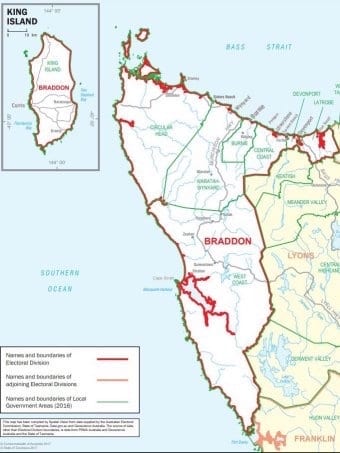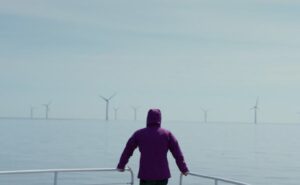 Labor is proposing to establish the country’s first official renewable energy zone in the north-west of Tasmania, where more than $2 billion of investment – mostly in wind – are planned.
Labor is proposing to establish the country’s first official renewable energy zone in the north-west of Tasmania, where more than $2 billion of investment – mostly in wind – are planned.
Federal Labor’s climate change spokesman, and party president, Mark Butler, made the announcement while campaigning in the seat of Braddon, one of the seats to go to the polls in late August.
“We think the first Renewable Energy Zone identified anywhere in Australia should be the North West of Tasmania,” Butler said.
“…. Because we are convinced it has the highest quality resource, great interest in investment and will do great things with the hundreds of jobs that will flow from that.
“What you do need, though, is a government in Canberra that has a policy that will drive renewable energy investment.”
The area is home to several different large-scale wind proposals, including a 1,000MW wind facility on Robbin Island and Jim’s Plains, although this project would only go to that scale if a second “Basslink” was built to add a new connection from Tasmania’s grid to the mainland.
Renewable energy zones are being proposed by major transmission groups, the Australian Energy Market Operator, and even the NSW and South Australia Liberal governments as a way to harness and co-ordinate the building of large-scale wind and solar.
Butler says Labor’s 50 per cent target contrasts with the Coalition’s attempt to “strangle” new wind and solar investment through the National Energy Guarantee, and its refusal to lift its emissions reduction targets for the electricity sector beyond 26 per cent.
This meant that the federal Coalition’s pet project – Snowy 2.0 – could be built without any significant new investment in wind and solar, making it largely a storage of excess coal generation rather than wind and solar.
“Expanding the pumped hydro arrangements here in Tasmania through the Battery of the Nation project, for example, only makes sense if you have a government in Canberra that will drive renewable energy investment,” Butler says.
As Labor and the Coalition battle over the scope of renewables investment in the future, what is becoming abundantly clear is the impact that renewables are having on current and futures prices in the wholesale market.
Morgan Stanley issued an interesting report on Monday which highlights not just the fall in wholesale prices since their peak last year soon after the closure of Hazelwood, but also the fall in futures prices, despite strong coal and gas prices.
“We therefore attribute falling forward prices primarily to new entrant renewables, and, at the margin, the fall in frequency control prices,” the analysis said.
It pointed to the expected 6.4GW of wind and solar to be added by 2020, and the impact of the Tesla big battery and demand management on the FCAS market.
The price for large-scale generation certificates (LGCs), is also falling heavily on the futures markets, with calendar 2021 prices now down to near all-time lows of $15/MWh, “suggesting that the pace of new entrants has surprised even power market participants.”
Morgan Stanley also noted the emergence of new “firming contracts” that offered customers the ability to source solar power at implied prices of $55-60/MWh during the day, and “firming prices” (i.e., prices when the sun isn’t shining) of $60-65/MWh.
This also meant that customers may be able to procure renewables under contract and hedge the intermittency, without the need for an incumbent gentailer. That has potentially significant implications for incumbents such as AGL, Origin and EnergyAustralia.
(See David Leitch’s analysis on ERM’s recent presentation here).
Meanwhile, the federal Coalition attempted to make something of the Victorian government decision to extend coal mining licences for the major brown coal generators in the Latrobe Valley, saying it stood in contrast to federal Labor’s vow to “kickstart their closure.”
The Victoria government says the mining licences have been extended to marry them with the proposed closure dates for the main generators (2032 for Yallourn, 2048 for Loy Yang), and so that the operators could continue remediation after the generator closures.
Interestingly, however, they have added a clause that will now require operators of brown coal generators in the state to provide five years’ notice of closure, compared to three years proposed by Finkel Review, and the several months provided by Engie for the closure of Hazelwood.








